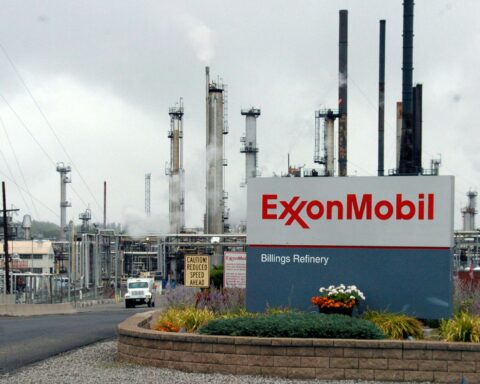The engine-ready fuel will be partially derived from camelina, a plant that does not displace food crops and can significantly reduce greenhouse gas emissions.
Production is scheduled to start in early 2022 at the Global Clean Energy biorefinery in Bakersfield, California.
Energy Factor spoke with ExxonMobil project leads Jarrett McCleskey and Steve Papaleo about the agreement, the feedstock and its impact. Here’s what they had to say.
EF: Steve, this announcement with Global Clean Energy sounds exciting. Before we talk about why ExxonMobil felt strongly about purchasing renewable diesel from Global Clean Energy, can you first tell us a little about the seed itself and its potential as an energy product?
Steve Papaleo: Absolutely, I know camelina is a relatively unknown feedstock for renewable diesel, but it has a number of attributes that make it attractive from both an environmental and cost perspective.
First of all, you can grow this plant in a field that is normally fallow. Fallow land is intentionally left unplanted to restore soil quality, so the camelina planting maximizes the utility of this land without displacing acreage used for food production. Second, the seed has a high oil content, and this means a high oil yield from the extraction process and less total acreage needed. This allows the camelina oil to be produced at a lower cost, which is important as the feed oil is the highest-cost component in renewable diesel production.
EF: What would make a company that already produces its own fuel want to buy Global Clean Energy’s renewable diesel? Why does ExxonMobil support this technology?
Jarrett McCleskey: We think there’s a lot of potential in Global Clean Energy’s proprietary seed technology, and the unique attributes of their product clearly support our efforts to supply energy around the world while helping customers reduce their environmental impacts. Camelina renewable diesel has competitive advantages that can help meet increasing demands for lower-emission fuels, and that’s why we’ve expanded upon our initial agreement. We can now purchase up to 25 million barrels over five years, whether it’s for use into our own system or for sale to others. This supply will also help fulfill regulatory requirements for us to blend renewable diesel with petroleum-based fuels we already sell.
EF: And speaking of reducing environmental impact, how does renewable diesel compare to petroleum diesel?
SP: Renewable diesels have the potential to reduce life cycle greenhouse gas emissions when compared to petroleum-based diesel, and current data from the California Air Resources Board suggests we could see reductions in the range of 40% to 80%[1]. This means they could become an important contributor to emission-reduction efforts in the transportation sector.
EF: When can consumers use this renewable diesel in their own vehicles?
JM: Global Clean Energy’s project is progressing well, with commercial production expected to start in early 2022. Once available, this product will be chemically similar to petroleum-based diesel, so it’s considered a “drop-in” fuel that meets all finished product specifications for today’s engines. That means consumers will be able use it interchangeably with petroleum-based diesels and can even mix the two in their tank. For example, drivers could fill up with the camelina-based diesel and then top off their tank with petroleum-based diesel while on the road.
EF: How does this agreement fit into ExxonMobil’s product offerings?
JM: Supplying this lower-emission fuel is part of ExxonMobil’s ongoing efforts to help our customers reduce their carbon footprint. We think camelina-derived renewable diesel has a lot of potential and could be just one of many products that fit into a larger alternative fuels market – a market that might also include other fuels we’re working to develop from algae and cellulosic biomass like cornstalks. Whether it’s collaborating with private- and public-sector partners to develop next-generation alternative fuels or innovate CO2 capture solutions, ExxonMobil is working to advance a number of energy solutions essential for a lower-carbon future.
There’s not just one answer to energy with fewer emissions. It takes research and collaboration to lead us to those answers.
EF: Steve and Jarrett, thanks for taking the time to speak with us.






